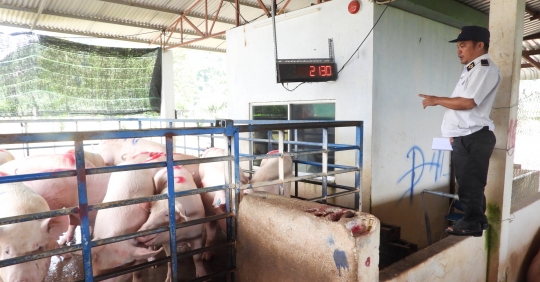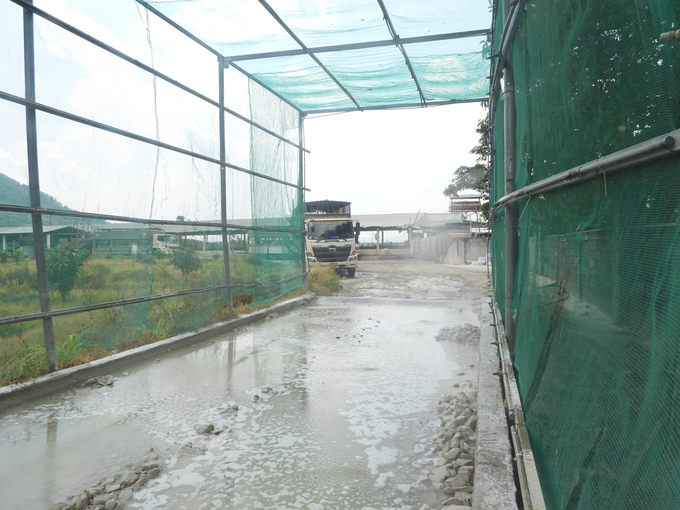
CP Vietnam Livestock Joint Stock Company’s pig transshipment station right at the foot of Ba Den Mountain in Thanh Tan Township, Tay Ninh City, Tay Ninh Province. Picture: Tran Trung.
At CP Vietnam Livestock Joint Stock Company’s pig transshipment station, right at the foot of Ba Den Mountain in Thanh Tan Township, Tay Ninh City, Tay Ninh Province, we saw nearly a dozen trucks waiting to be disinfected.
Inside the station, dozens of workers are busy counting and channeling pigs, under the supervision of local veterinary quarantine officials. Notably, the pigs are constantly bathed by an automated system, the total herd of pigs on the station is constantly fluctuating by the hundreds, but there is no odor or putrefaction.

Pigs are washed before entering the station. Picture: Tran Trung.
Mr. Phan Hien, station manager of CP Vietnam Livestock Joint Stock Company – Tay Ninh Branch, said the unit is the first company in Vietnam to adopt the pork transshipment station system to improve biosecurity for the livestock system.
CP Vietnam currently operates 24 warehouses with pork transshipment stations, each ranging in area from 1 to 3 hectares, stretching north to south. The transfer stations are divided into three areas: the secure area as an entrance area for receiving pigs from the farms; The risk zone is where pigs are loaded onto the customer’s vehicle and transported to the slaughterhouse. The buffer zone is located between the two security zones and the risk zone.

Quarantine monitors pigs at the weigh station before they are brought into the station. Picture: Tran Trung.
The Tay Ninh Pig Transfer Station covers an area of 20,000m² and is equipped with complete facilities including a pigsty, a sterilization house, a pig import gate, a pig import and export bridge, a pig weigh house, a truck wash, a veterinary room and a number of other facilities serving the work and daily activities of the staff at the station.
At the transhipment point, import and export of pigs is always safe and fast, and biosecurity is also strictly implemented to avoid the risk of diseases, especially African swine fever (ASF) and foot-and-mouth disease (FMD) in animal production.
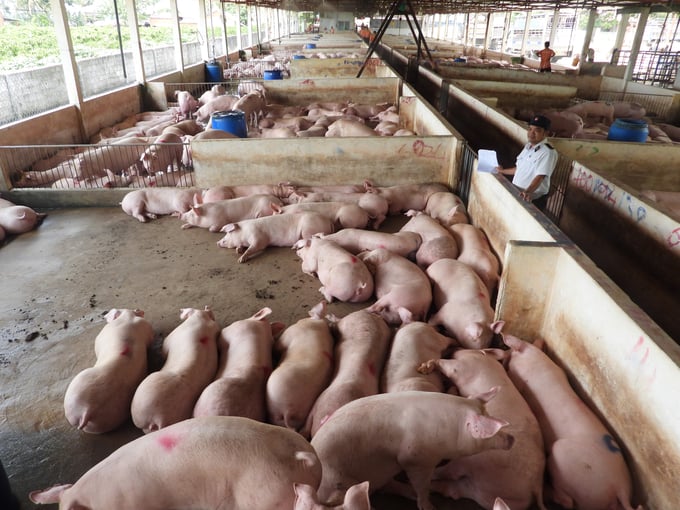
Pigs continue to be monitored at the station. Picture: Tran Trung.
“Before, slaughterhouse owners could drive their cars to the farm to catch pigs. But in recent years, in view of the risk of disease transmission, it has been decided to build a transshipment center to completely isolate the breeding and selling places and avoid the possibility of infection from various disease sources,” said Phan Hien.
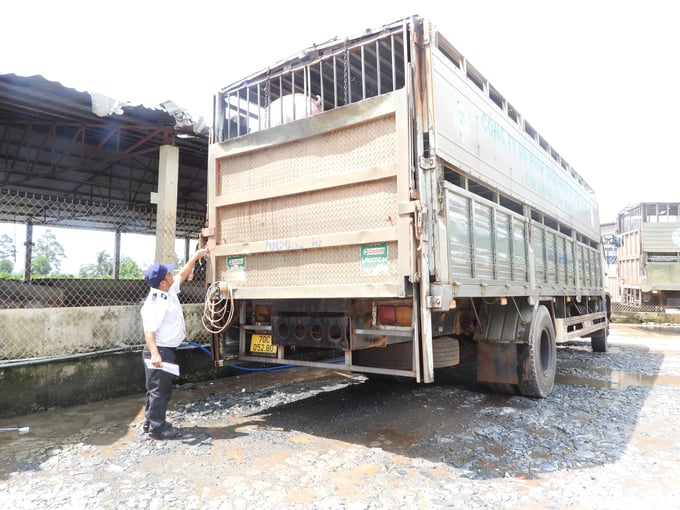
Vehicles are checked before leaving the station. Picture: Tran Trung.
Accordingly, each vehicle transporting pigs belonging to the Vietnam Joint Stock Company is sprayed with disinfectant prior to arrival at the farm. A vehicle only goes to a farm, receives pigs at the farm and transports them directly to the pig collection area. After one trip, the car continued to be sprayed with disinfectant. The owners of the pig slaughterhouse come to the assembly point to receive pigs for slaughter.
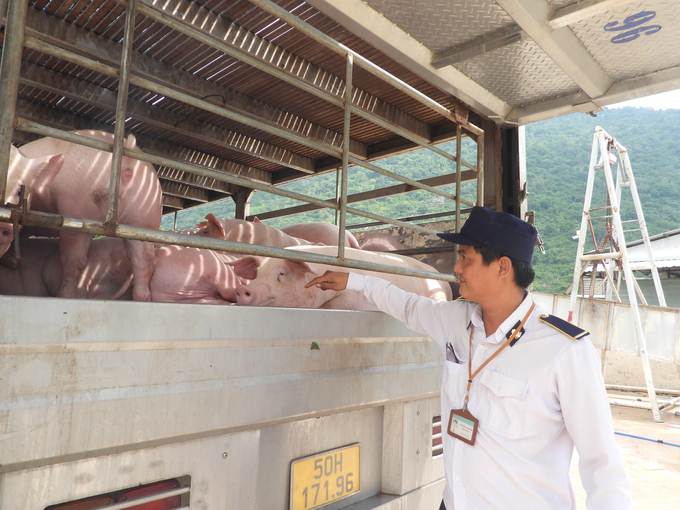
The pigs are checked before leaving the station. Picture: Tran Trung.
“The use of the Biosafety Pig Transfer Station helps bridge the direct contact between the transport vehicle and the farming system. “During the transportation of pigs in and out of the pig sale transshipment station, they need to be disinfected and disinfected in many shifts according to the prescribed time,” Mr. Phan Hien pointed out.
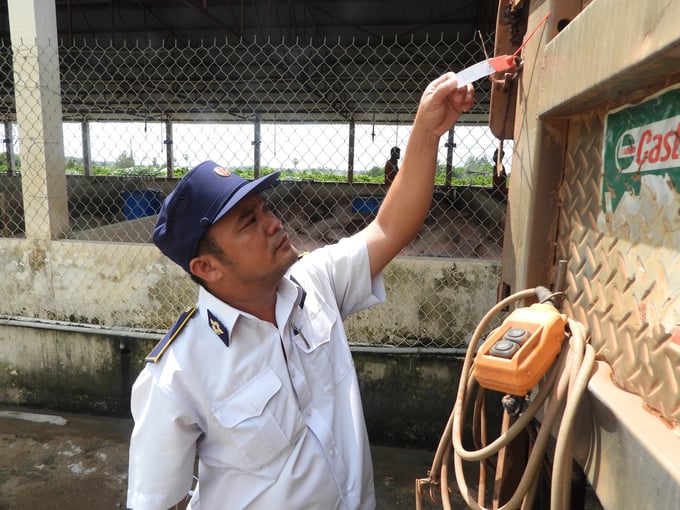
The vehicle is valid if it has been properly inspected and sealed and maintained by the quarantine officer. Picture: Tran Trung.
Mr. Nguyen Van Hung, quarantine officer of the Animal Husbandry and Veterinary Department of Tay Ninh Province, added that according to the circular of the Ministry of Agriculture and Rural Development on animal quarantine, the goods owners are required to declare the quantity of goods, the date and time of shipment, the place of departure and arrival, etc. when entering the transhipment station. In addition, the goods owners must register on the provincial public service portal.
On this basis, the quarantine officer checks and issues a quarantine certificate and seals the line of the truck that transports the pigs from the transfer station to the slaughterhouse.
According to Mr. Nguyen Van Hung, while local livestock farms are large-scale, they strictly implement biologically safe breeding, most of which have received disease-safety certificates.
Accordingly, the pigs brought to the station are guaranteed to be from pigs and the station has not detected any cases of infected pigs to date. However, as quarantine officers, the brothers on the ward all focused on their expertise, did not neglect their subjectivity, and increased their round-the-clock inspection and supervision to ensure the responsibilities assigned to them.

